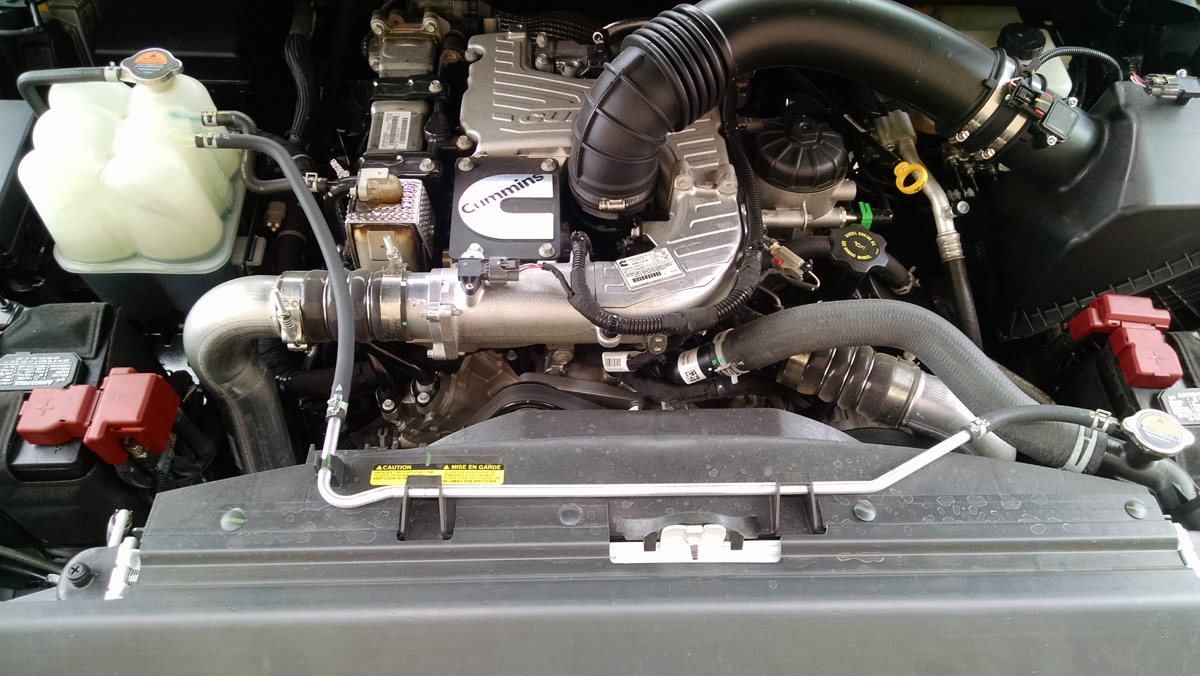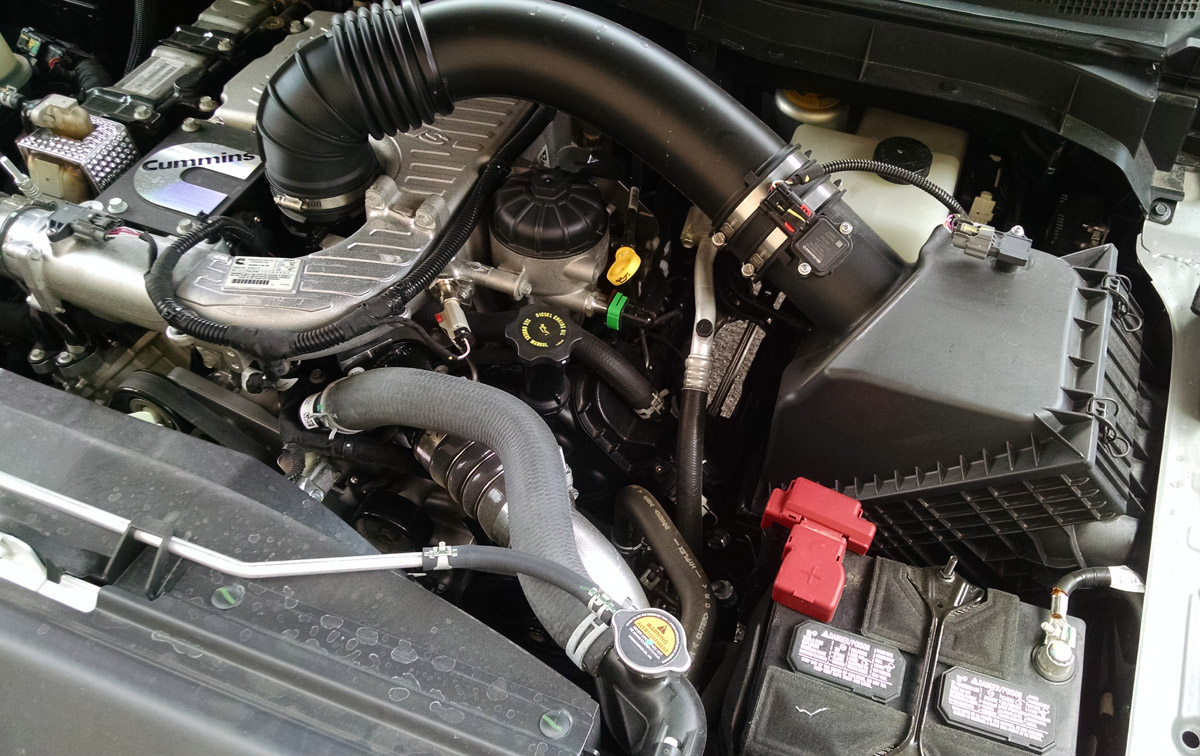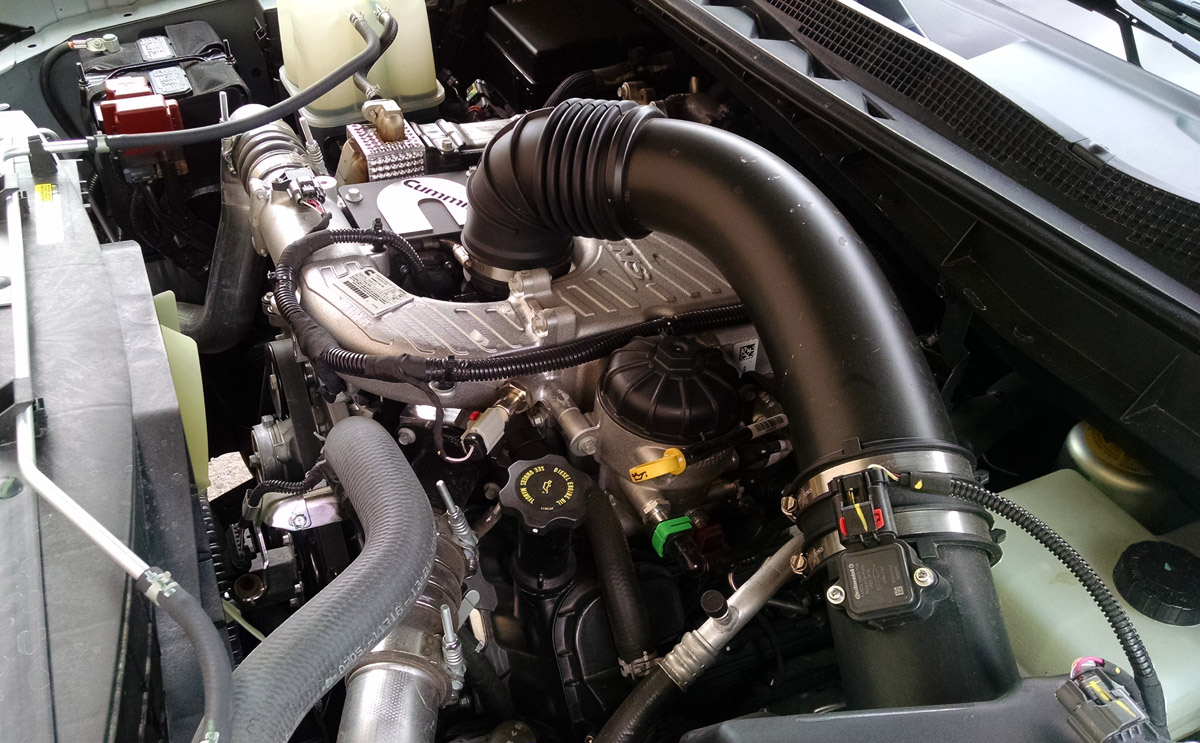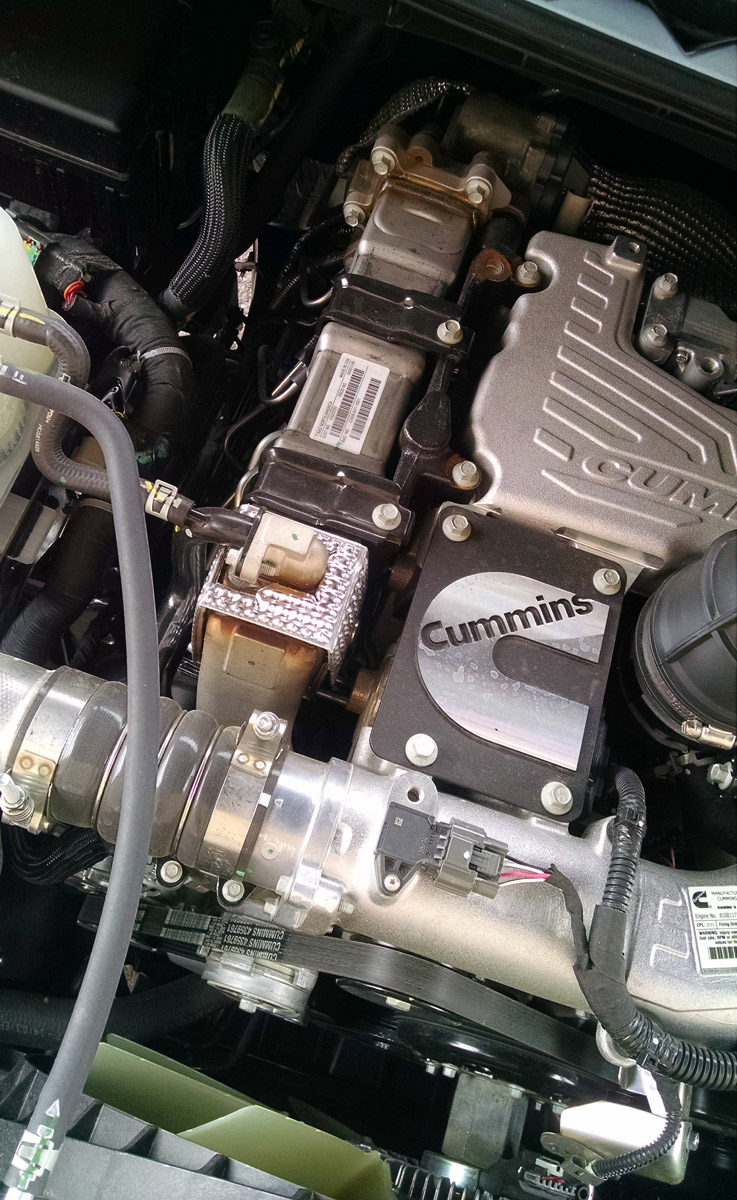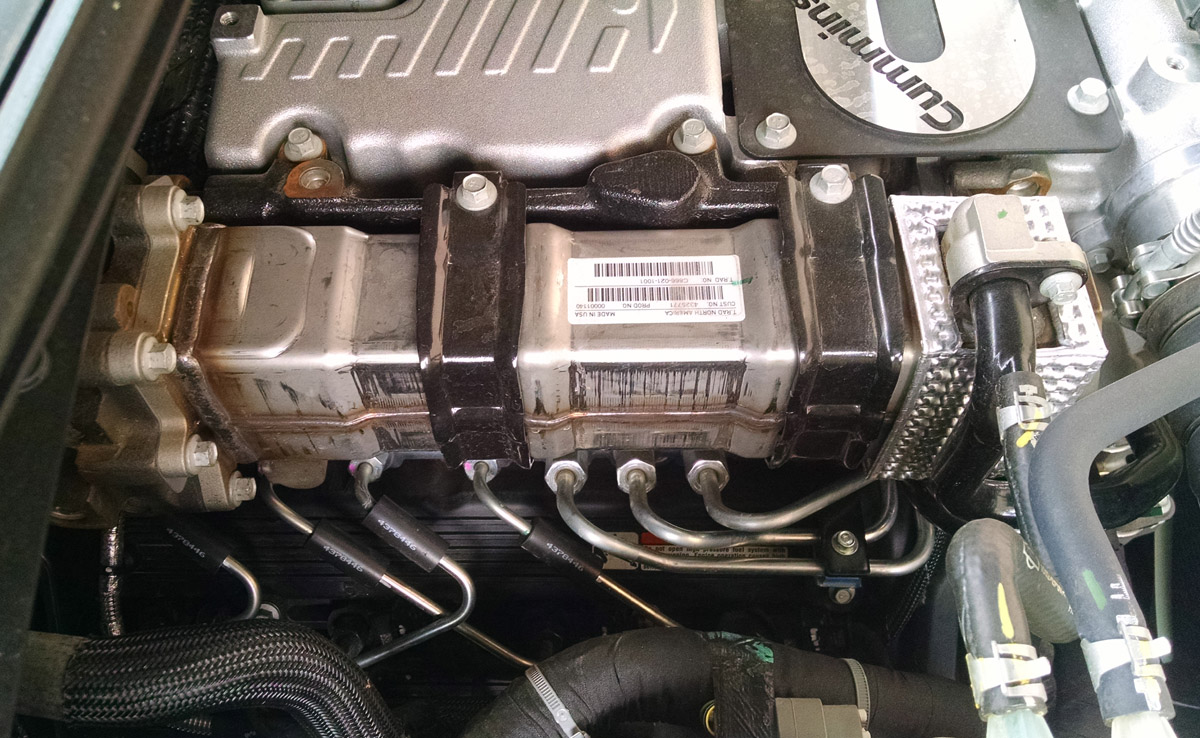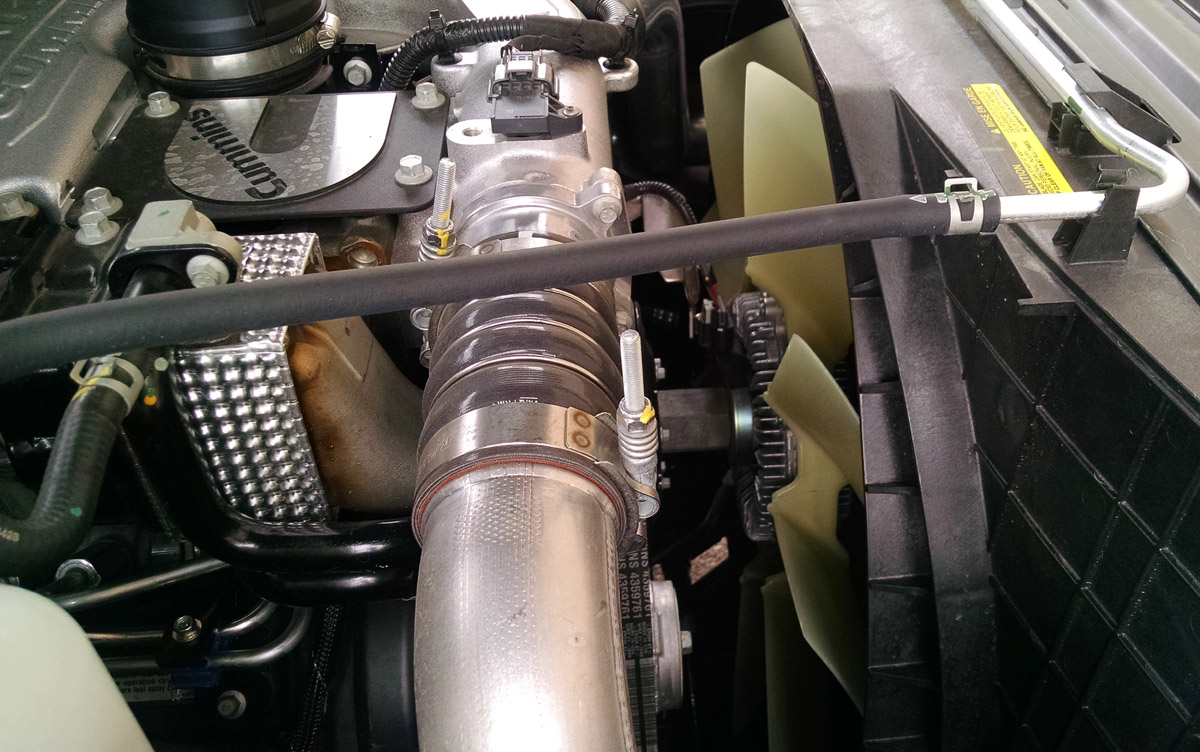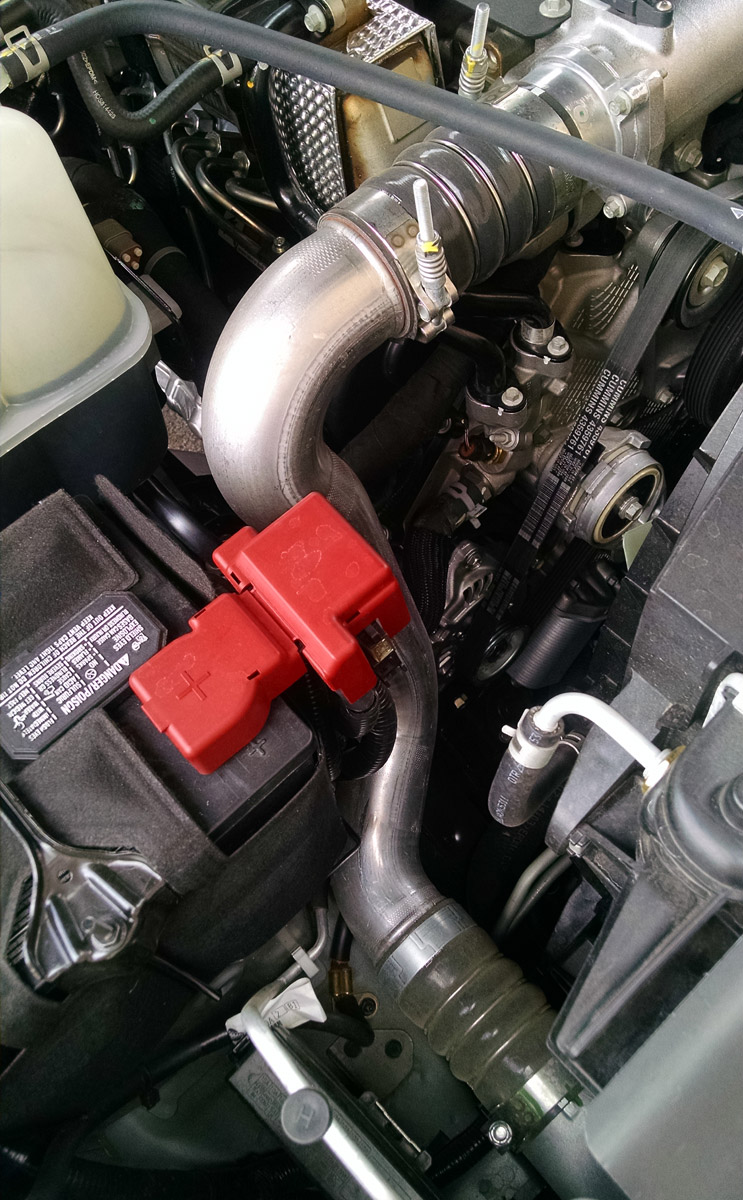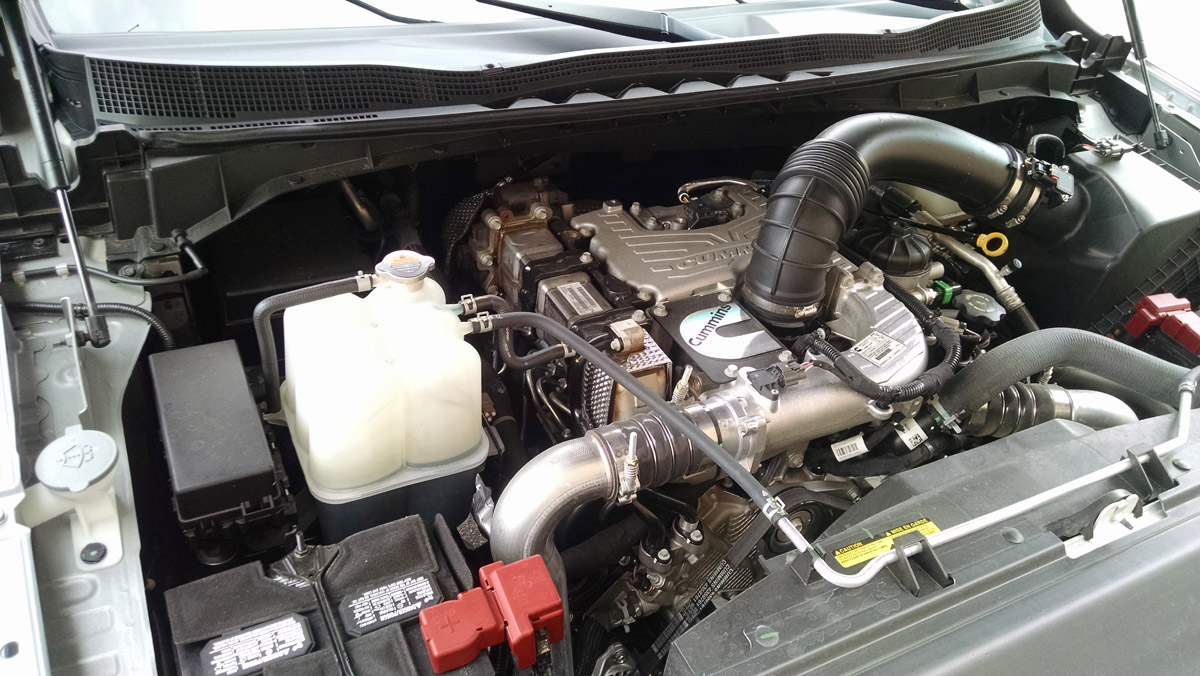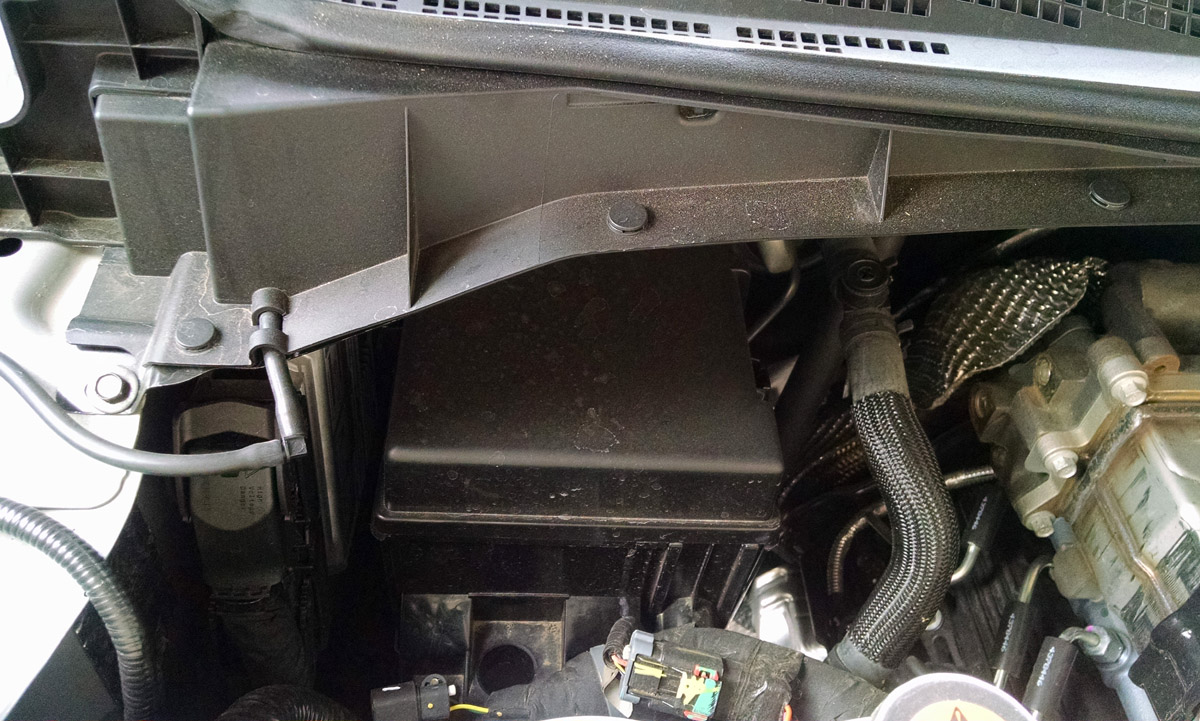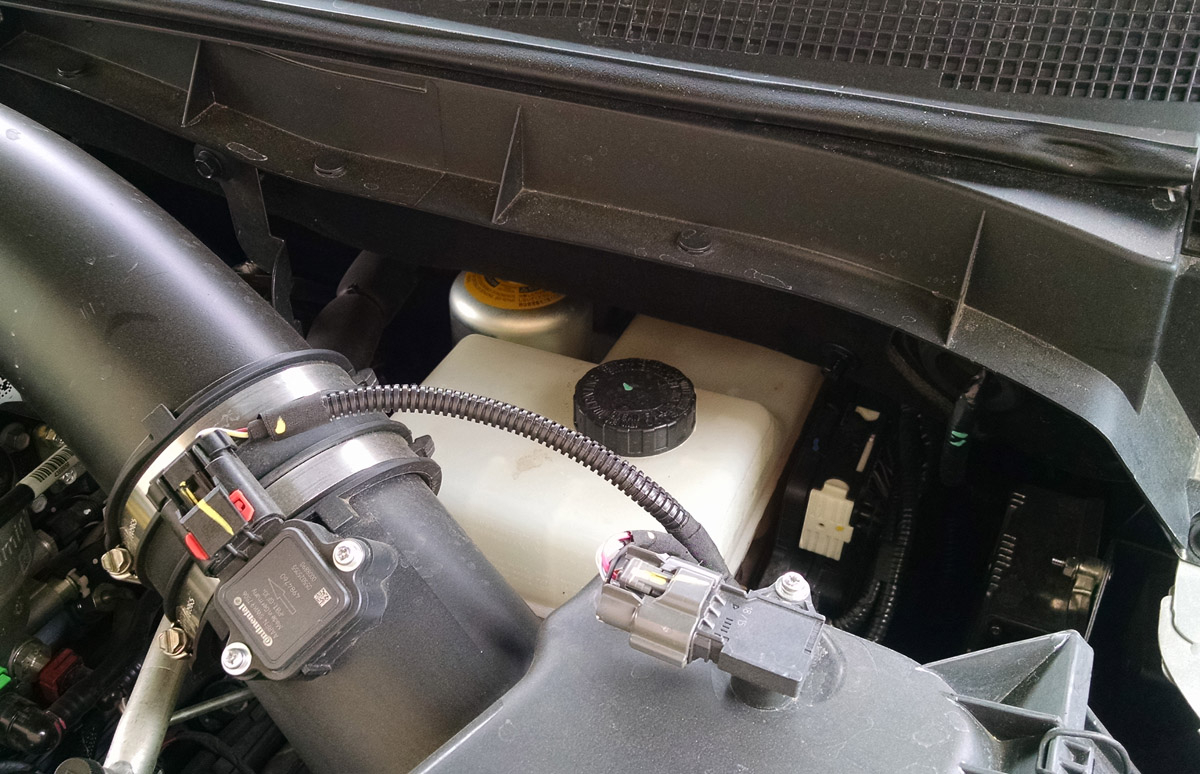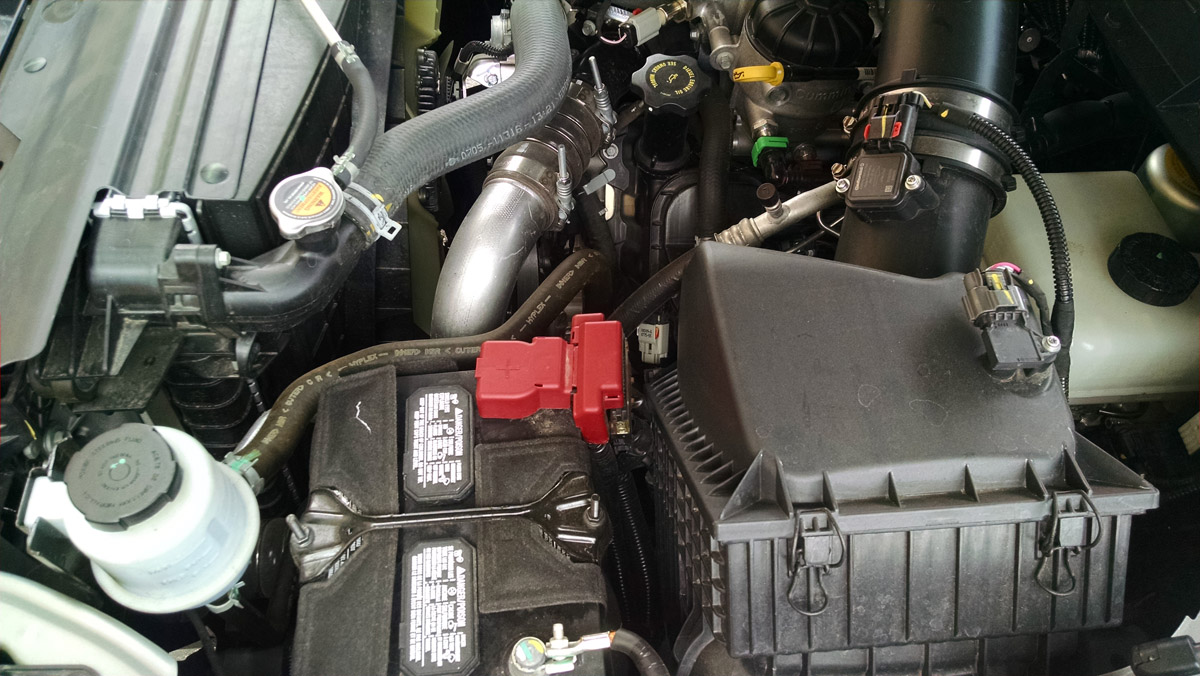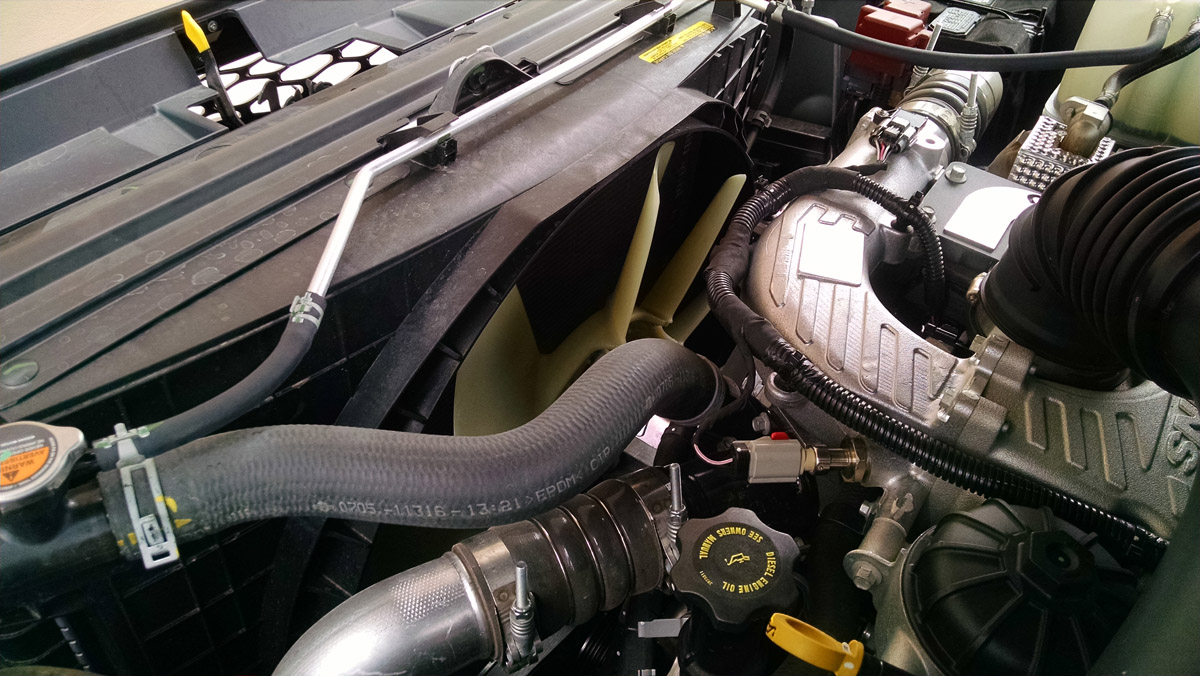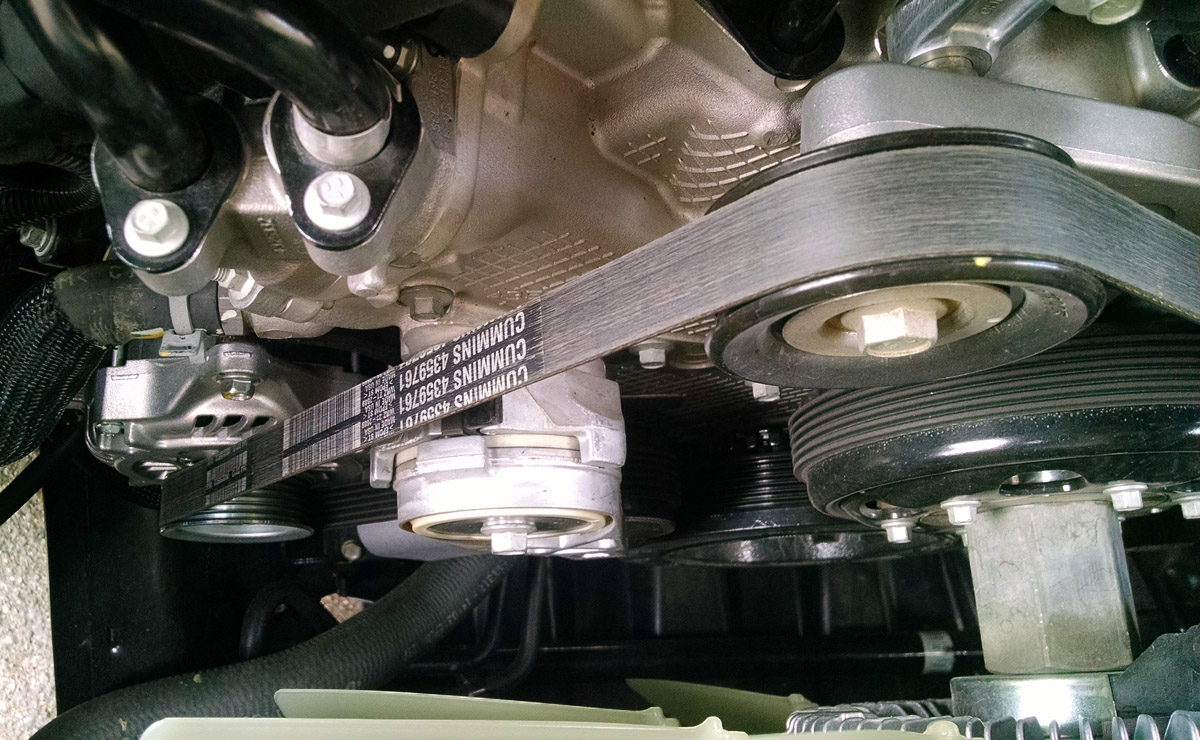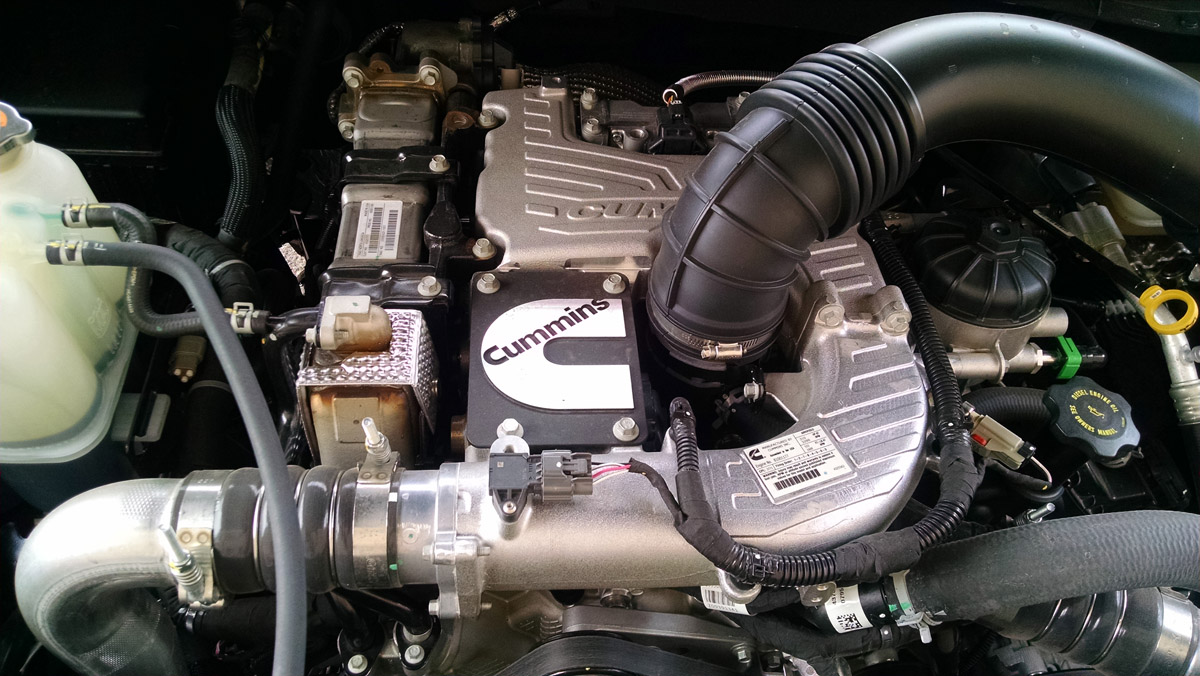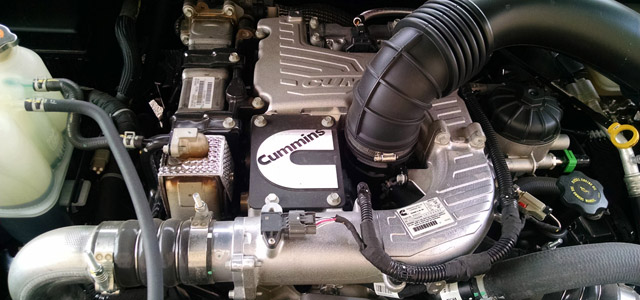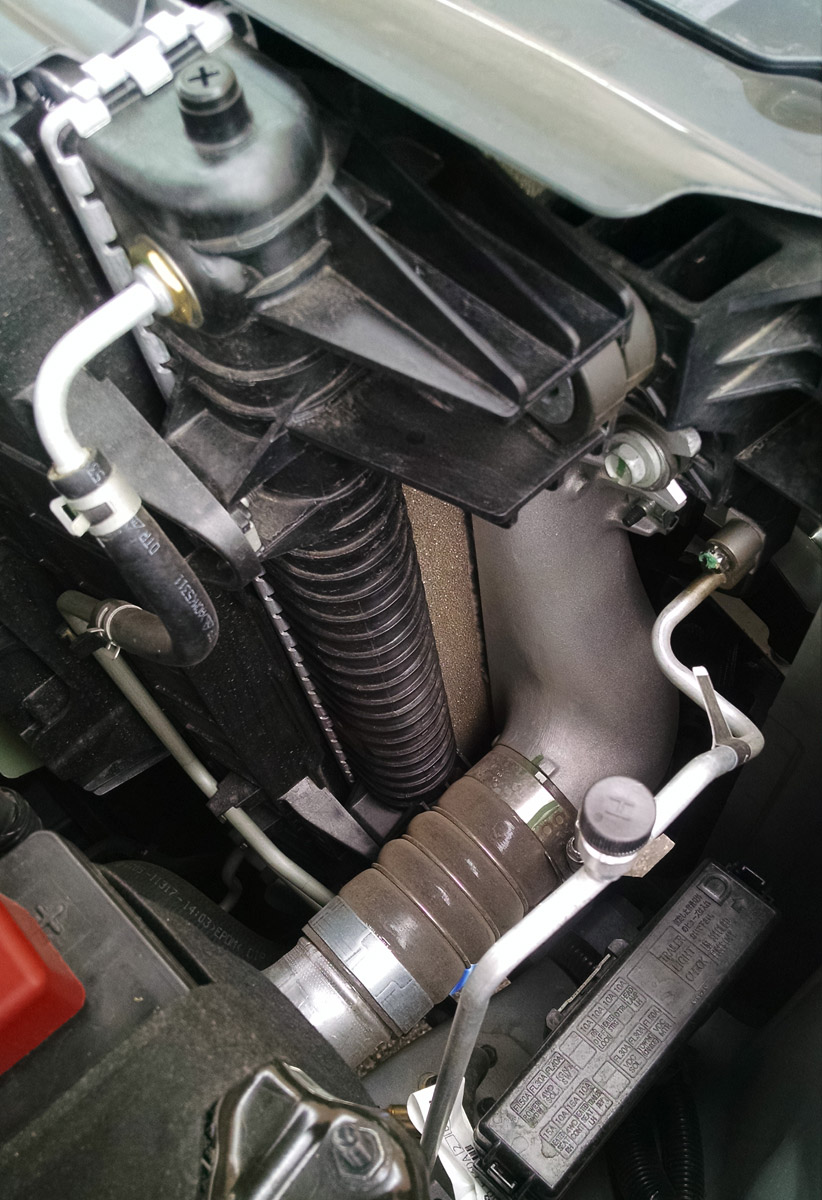The first thing you notice under the hood of the Nissan Titan XD is that this thing has one of the best looking diesel engines on the market. They went to a lot of care to design its cast aluminum upper intake tract to be aesthetically pleasing and prominently display the Cummins logo.
The next thing you realize is how tightly packed this engine compartment is. Though the 5.0 liter Cummins V8 is compact for its class, the plumbing for its turbochargers, dual batteries and cooling apparatus take up most of the space.
Before we get too far into the weeds, the engine is rated at 310 horsepower and 555 pound-feet of torque. There are no EPA fuel-economy estimates but you can see what we achieved in our test drive linked below.
Following the flow of things, air comes into the filter box through the driver side fender well then travels across to the top of the engine where it disappears down under the upper intake to the turbochargers.
The Cummins V8 for the Titan XD uses a unique two stage turbocharger system with a small high-pressure compressor and a larger low-pressure unit. The smaller one spools up quick for low rpm boost, the larger coming on later. A valve between them manages boost flow to keep it constant regardless of conditions.
It’s a bit more exotic that most systems found in full-sized trucks on the market today, the goal to reduce or eliminate turbo-lag. In my test drives my seat of the pants tells me it works and you can hear them quite well, especially on deceleration.
After the turbos, boosted air then flows up front to a large air-to-air inter-cooler mounted ahead of the radiator, which is one of the reasons the Titan XD has such a large upright nose compared to the standard Titan half ton. After the air is cooled it heads back to the upper intake chamber and down into the engine.
Like most diesels today, the 5.0 liter Cummins V8 uses a high-pressure common rail injection system with electronically fired injectors. The fuel pump is mounted out of sight along with the turbochargers down in the engine’s valley and driven by the timing chain.
As diesel emissions are a hot topic today, its worth noting this engine also features a cooled exhaust gas re-circulation or CEGR system that can be easily seen here, but should never be touched when hot. It captures a small percentage of exhaust, cools it and reintroduces it into the intake tract to be reburned – reducing overall emissions.
Heads are aluminum with dual overhead cams and four valves per cylinder, with a finished out design looking much like a high-performance gasoline engine – again, the Cummins guys have a thing about making their motors look good.
Under them is a compacted graphite iron block which is lighter than standard cast iron and stronger to boot. The blocks are actually cast in Brazil before they make their way up to Columbus, Indiana where these engines are assembled.
Looking around under the hood you can see most major service points are easily accessible even though it’s sung under here. The fuel filter is right up on top of the engine as is the oil filler and dipstick. The oil filter is located down under the front of the engine.
Maintenance items like the windshield wash fluid and the main fuse boxes are on the passenger side up near the firewall, mounted high for somewhat easy reach. You will find the engine ECU up there as well.
The brake fluid reservoir is up where you’d expect it, high on the driver side firewall. Of note, the ABS system here uses a high pressure nitrogen canister for additional pressure demands during duty cycles. And like most diesels, vacuum is provided by an engine driven pump.
The accessory drive is a single belt design, driving the water pump, alternator, AC compressor, and power steering pump. Looking back forward the Titan XD uses an engine driven cooling fan managed by a clutch instead of an electric fan. It makes very little noise I have noticed.
Lastly, if you are looking to refuel the diesel exhaust fluid as I had to you do this at the fuel fuller neck. The fluid known as DEF is injected into the exhaust stream to neutralize the harmful Nitrogen Oxides and has to be kept full or the computer will shut down the engine to idle only until it is.

